This post contains affiliate links. Please see our disclosure policy.
Balance and stability training are probably the most overlooked part of a well-rounded fitness program. Perhaps this is because the results are not a visible as six-pack abs or sculpted arms. Or maybe it’s because stability training doesn’t get you moving and sweating like a good run or spin class. Like many things in life, balance and stability aren’t thought of much until you really need them! But both elements are important for nearly every type of physical activity, including daily activities throughout your whole life. Let’s learn more about how balance and stability impact our lives and then get into a quick 10-minute balance and stability workout you can do at home.
Balance and Stability: Where Do They Come From?
Let’s face it, most of the time you don’t have to think about your balance or stability much because they come so naturally. How does that happen? What exactly are the elements of balance and stability all about?
Balance
Balance is basically all of your muscles and joints being able to work together to keep you coordinated. At first, balance comes very naturally. When you’re a toddler you learn to walk and that takes balance. When you’re a little kid learning to ride a bike or ice skate you need balance. Even as a young adult, if you step off the curb wrong or suddenly need to dodge a patch of ice, your body usually kicks in and grabs the needed muscles to keep you from falling. Unfortunately, however, balance and stability decline with age. In order to stay strong, you have to work on it. In addition, many activities require better-than-average balance or stability. The good news is that by making some small changes to your workout routine, you can add balance training as part of the workout routine you already have.
Stability
According to the American Council on Exercise (“ACE”), stability is defined as the ability to maintain control of joint movement or position by coordinating actions of surrounding tissues and the neuromuscular system. Sounds a lot like balance—because it is! In fact, balance and stability generally come back to one very important factor: a strong CORE!
How A Strong Core Relates To Good Balance and Stability
Your core is the essence of everything you do. From everyday things like carrying groceries to athletic pursuits like swinging a kettlebell, the rest of your body is only as strong as your core. A strong core is also responsible for your sense of balance. “Balance not only requires equilibrium, but also good stability of the core muscles and the joints, particularly the hip, knee and ankle,” says Leigh Crews, spokesperson for the American Council on Exercise.
Related: 8 Challenging Yoga Poses For Core Strength
Bottom line—one way to increase you balance is to keep strengthening your core. Exercises like planks or hip raises, or methods such as Pilates, are all going help you build up your core strength and, in turn, have better balance. In fact, taking your core training onto an unstable surface can give you a big bang for your buck. Example? Try a forearm plank and then try a forearm plank on a stability ball. Feel the difference? By taking a basic exercise and placing it on an unstable surface, you use all the same muscles and so many more! To prevent you from falling, your stabilizers must kick in. More of the tiny muscle fibers around your core are used and you are training to be stable. Simple!
Why Are Balance And Stability So Important?
So what’s the big deal with balance? If all of this comes so naturally why would I need to work on it? Well, the fact is that though it may come naturally, it can always be improved. Moreover, as we age our balance, stability and coordination begin to decline just like so many other things like our eyesight or our hearing. But while you can get glasses for your eyesight and get hearing aids for poor hearing, the only way to improve your balance and stability is to work on it!
The Mayo Clinic includes balance as one of the basic elements of a well-rounded fitness program stating that balance training “….is important because balance tends to deteriorate with age, which can lead to falls and factures.” A scary thought for seniors who know they are just one fall away from long-term rehab, assisted living or even death. Thousands of Americans die each year from a broken hip.
The good news is that there are countless ways to improve your balance. From simple every day living tips like standing on one foot while you brush your teeth, to all-out workouts that zero in on core and stability training to help your balance be rock solid, there is no reason you can’t get this done.
10-Minute Balance & Stability Workout
This workout is one of the very simple ways you can exercise and strength train, while improving your balance and stability at the same time. All of these moves are great on their own or as a complete balance, stability workout that you can do a couple times a week.
Instructions: Begin with this brief warm-up for one minute:
- March in place for 15 seconds
- Do 15 deep squats with your hands behind your head
- Follow up your squats with 15 jumping jacks.
- Finish by reaching for your toes and rolling your back up slowly.
Once warmed up, try each of the exercises below for 45 seconds, then take 15 seconds to transition to the next move. Move slowly with control and keep your abs pulled in tight at all times. Have fun!
Squat Curl with Alternating Knee Lift
1) Start in squat position, weight back on heels and arms long next to side holding dumbbells.
2) Squeeze your glutes to press up and lift right knee as you curl the weights to your shoulders.
3) Slowly lower the weights back down and return to squat position. Repeat with left knee.
Balancing Single Arm Row
1) Bring your weight to right foot, extend the left leg long behind you and hold the dumbbells in left hand.
2) Bring left elbow straight back pulling dumbbells to hipbone. Slowly lower arm to long position. Continue for desired number of reps and switch sides.
Stability Ball Push-Up
1) Begin in a plank position with feet on the ball and hands on floor just below your shoulders. Hold your body in a straight line.
2) As you inhale, bend your elbows to lower chest toward the floor. As you exhale push back up to plank position.
Stiletto Squat
1) Start standing and lift heels high like you’re wearing heels. Keeping your abs engaged slowly drop into a squat bringing your hips to knee height.
2) Squeeze your glutes and return to you starting position.
Stability Ball Ab Rollout
1) Begin in a high kneeling position with ball in front of you.
2) Clasp hands together and place on top of the ball.
3) Keeping back long and abdominals tight, press hands into the ball and roll it out in front of you until forearms are on the ball and your body is at a 45 degree angle.
4) Use your forearms to pull back slowly and return to start position.
Stability Ball Hamstring Roll In
1) Begin lying on back, arms by side and feet on top of stability ball.
2) Squeeze glutes and abs and lift body up so you are in a straight line with only shoulders and head relaxed on mat.
3) Pull heels toward glutes rolling ball in, then push the ball back out. Continue to pull ball in and out for desired number of reps. Slowly lower body back to the mat.
Side Plank with Arm Extension
1) Bring your body into one straight line on the floor stacking legs, hips, and your shoulder directly over your elbow into a forearm plank. Lift hips with dumbbell resting hovering over the floor. (You can modify this plank by bending your lower knee if necessary)
2) Raise the dumbbell directly over your shoulder keeping abdominals engaged and lower with control working your arms, and entire core.
Plank to Single Arm Reach
1) Begin in a plank position with your shoulders over your wrists and your body in a straight line.
2) Raise your right arm and hold keeping abs tight. Repeat on the other side.
Kick Through Lunge
1) Stand tall with your feet hip distance apart. Take a large step backward with the right foot and lower your body toward the floor. Both legs should be bent at a 90-degree angle at the bottom of the lunge.
2) Straighten your left leg and kick your right foot forward to hip height or higher if possible. Repeat for desired number of reps then switch legs.
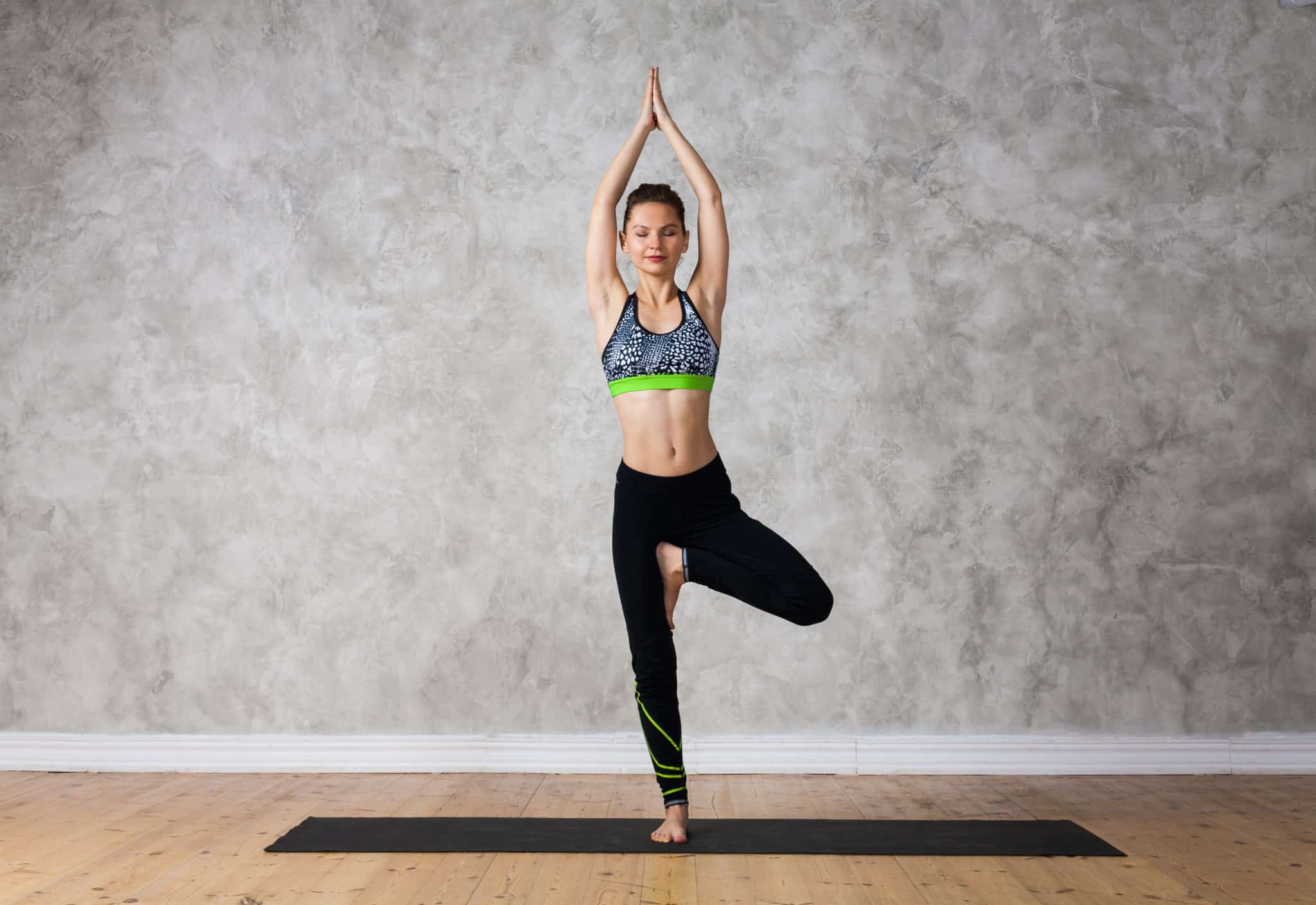
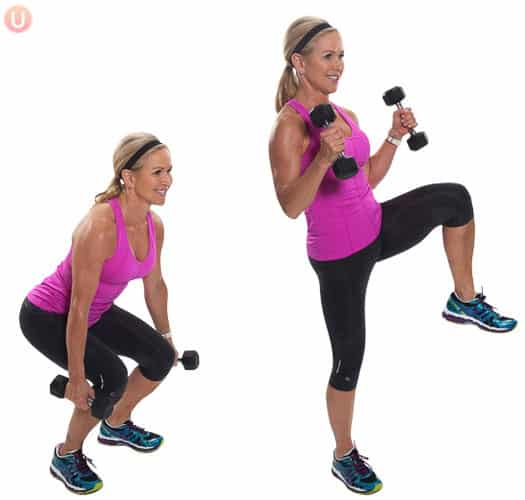
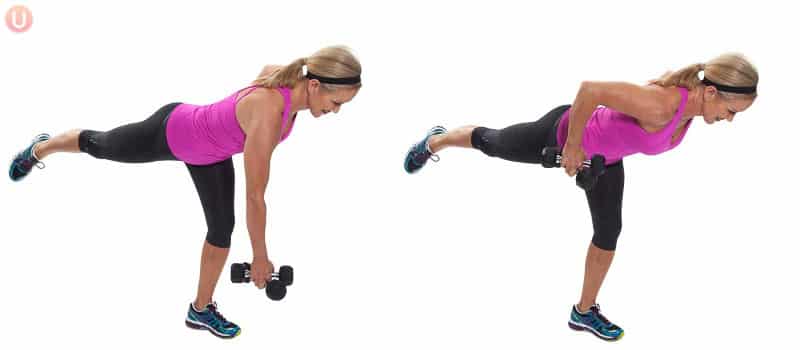
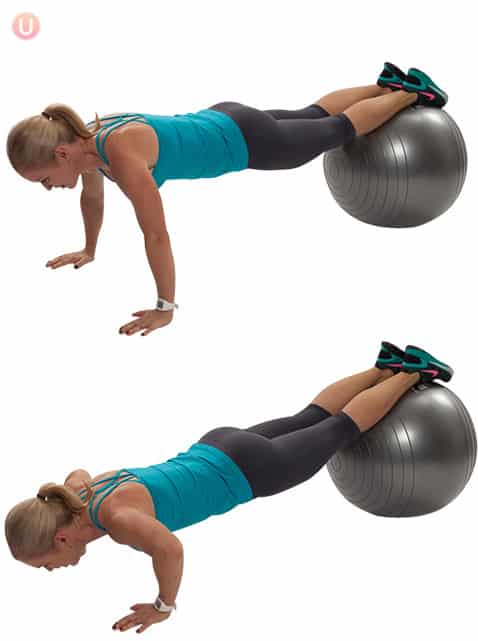
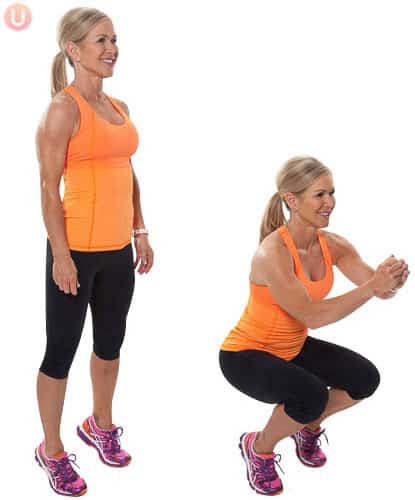
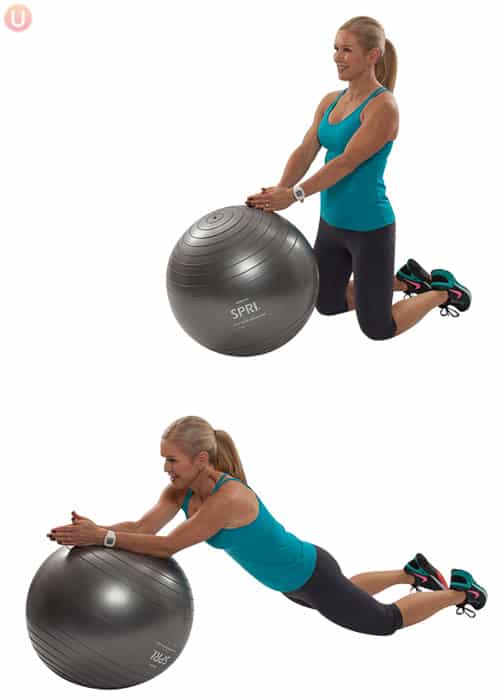

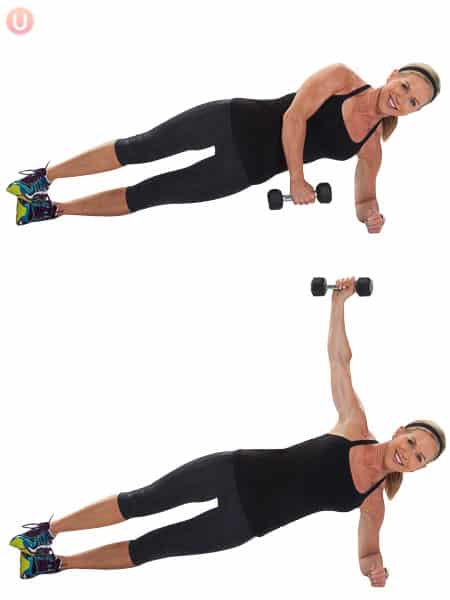
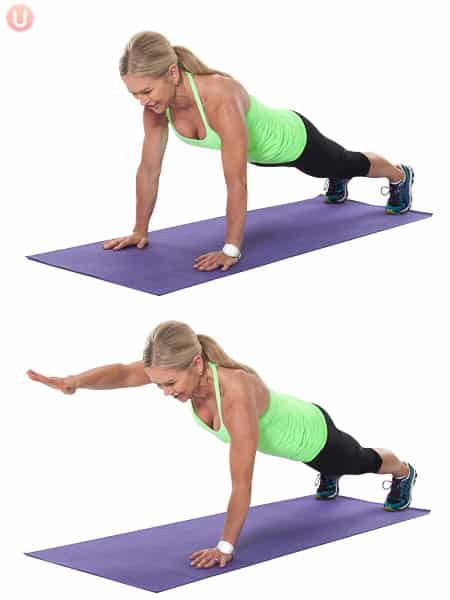
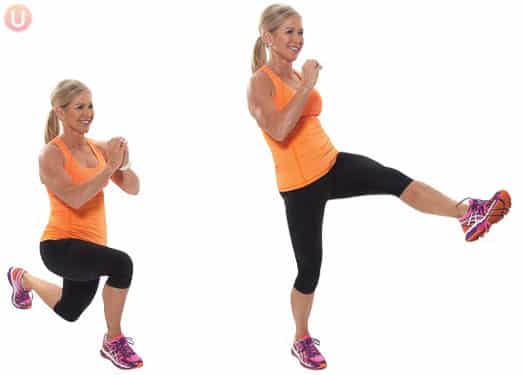
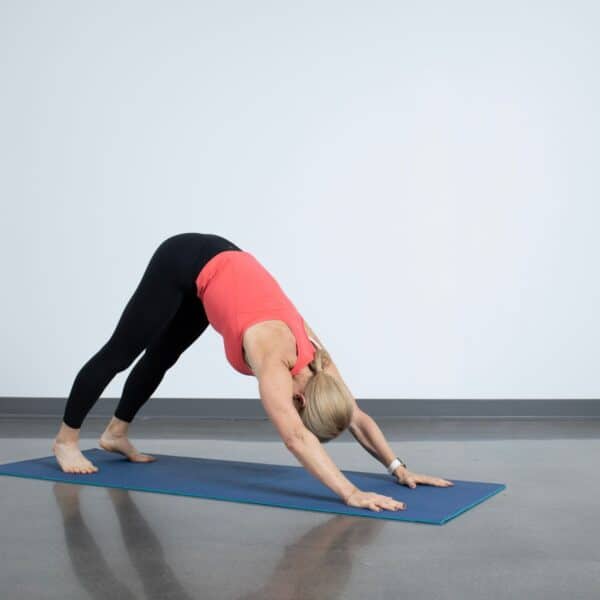
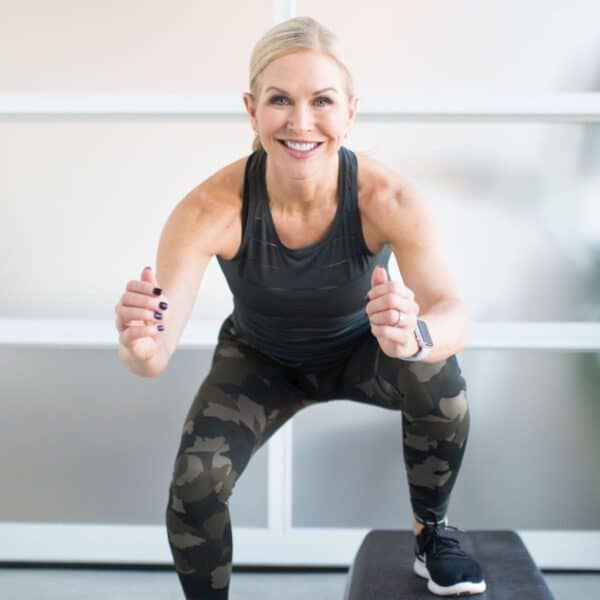

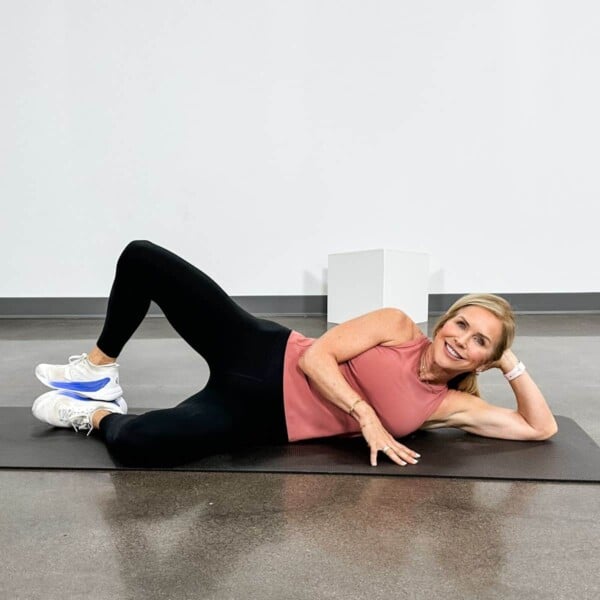



Nice workout! I will have to start slow and work up to it. I have some flexibility but this seems to require a lot.
Enjoyed this workout. Some exercises are not as easy as you’d think but very doable.
Great workout! I used 9# dumbbells and was sweating by the end of it!